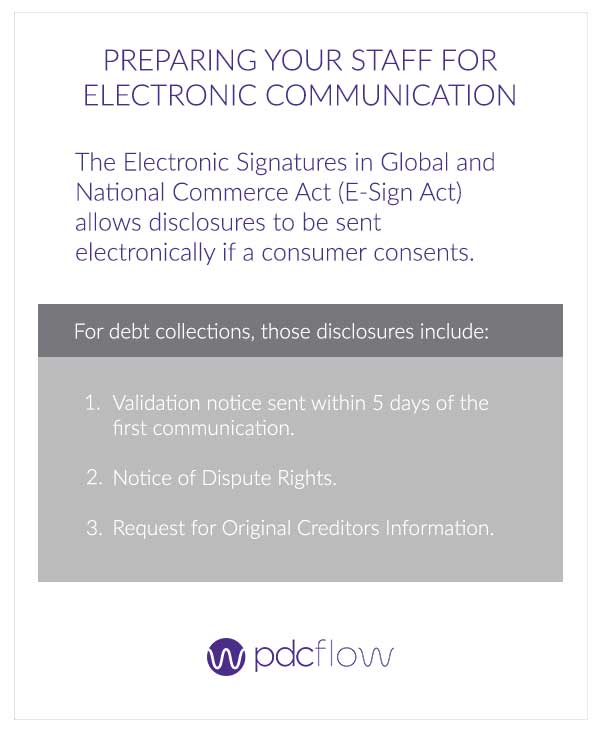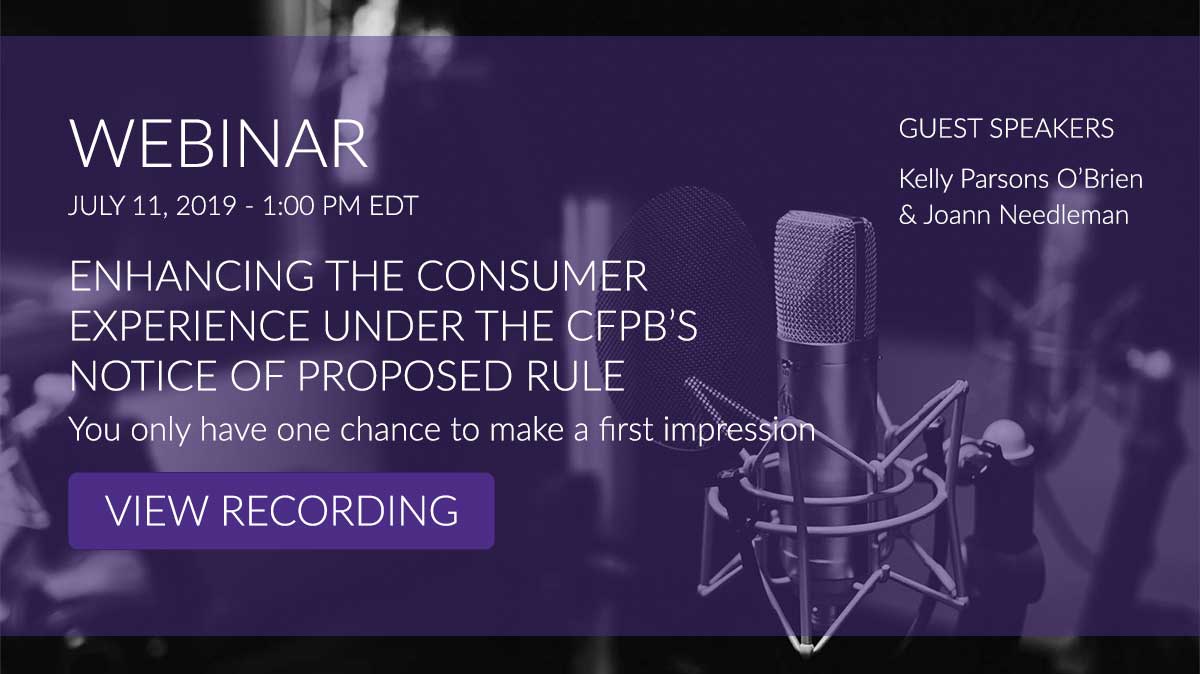Industry experts are certain electronic communication will play a part in the final CFPB debt collection rule once it is created. This means agencies will be given clearer guidelines on how text messages and emails can be used for communication with consumers.
Sending communications through electronic channels offers consumers more choice in how they can resolve their debts. These technologies can also save collection agencies money on supplies and cut down on time spent on manual tasks. However, officially making the switch will be an adjustment for collection industry staff at all levels. Here’s what collection professionals in each department should do to prepare:
Agency Managers/Owners
Find the Right Software Vendors
Finding trusted, knowledgeable technology partners is one of the best ways to prepare for the shift. Shopping for software products for your business is a big commitment. Start by assessing the needs you want new technology to fulfill. Find receptive vendors who can answer your questions and provide you with free training and ongoing support.
Speak to Compliance Staff
If your company employs a compliance manager, they should be involved in implementing your use of text message and email. Teams that have been tasked with reading and dissecting the CFPB’s proposed rule will also have good insight into the features your company will need to make compliance as simple as possible.
Motivate Employees to Stay Informed about Electronic Communications
While compliance staff, trainers and collectors all know what is expected of them, part of management is keeping employees motivated. Make short term and long-term goals for each department that relate to implementing electronic technology. Monitor deadlines, and don’t forget to celebrate the team’s successes along the way.
Compliance Officers
Understand and Comment on the Proposed Rule
The Bureau’s new proposed rule contains detailed information on the consents required for certain types of electronic communication. The guideline is dense and will probably require your agency’s attorney to weigh in. Evaluate what your company already has in place or is thinking about implementing for email and text message consent. If there are guidelines that will negatively affect your business, tell the Bureau. The comment period for this rule will be open until August 19, 2019. Your feedback can help shape the future role of text and email in debt collection.
In the meantime, attorney and industry advocate Joann Needleman has highlighted some considerations for electronic communication consent to keep in mind.
- Consent to receive email is not the same consent under E-Sign: A consumer asking for other communications by email doesn’t mean they want formal disclosures through that channel. Separate E-Sign consent must be given for these disclosures.

- Consent to E-Sign by a work email address may not be consent to email a consumer at work. Consenting to electronic disclosures through work email doesn’t mean you have ongoing permission to email the consumer’s work address. This is because legal documents are usually only sent on a one-time basis.
- E-Sign may present operational hurdles. There are more facets to E-Sign consent than regular email consent. Differentiate between the two in policy and procedure documents and communicate the importance of these consents to training staff.
- Obtaining consent after opt-out. If a consumer has opted out of email from their original creditor, don’t send any communications electronically. However, if they reach out to you through text or email, you may then proceed with the E-Sign process your agency has created.
Perform Policy and Procedure Maintenance
Using text and email appropriately (according to the CFPB’s interpretation of the FDCPA) may require tweaks to your internal documents. Once the final rule is published, block off time in your schedule to make changes to existing policies and procedures or add new sections to your training materials.
Training Collection/Operation Managers
Communicate with Compliance Staff
Training staff must work closely with compliance staff during implementation. Trainers probably won’t need to understand the full CFPB document. However, they will need to know what sections of training have changed–and understand the compliance reasons behind the changes.
Train New and Existing Front-Line Employees
Of course, adopting text messaging and email in debt collection won’t work if the information isn’t passed on. It is vital to current and future compliance efforts to train new employees during onboarding and provide continuing education for long-time employees.
Front Line Collectors
Follow New Procedures Taught
Front line collectors are the first point of communication within the agency. They represent your business to the outside world and are in a special position to understand and advocate for consumers. When text and email communication are adopted, it is the front-line collectors who are trusted to adhere to compliance. Build and lead a winning team of trusted agents to ensure your reputation is in good hands.
Know Where to Go for Help
Remaining compliant can be tricky if you speak to dozens of people in a day. It shouldn’t be unusual for a collection agent to have a question about compliance after adopting a new procedure. All agents should know where to go to find answers for themselves in a handbook or have a subject matter expert to speak to–or both.
Look Out for Teammates
Being part of a team means helping each other out. Teach collectors to be open to helping each other when they are able. When adding new technology into the daily workflow, it’s important that your employees have the right tools and a supportive team to help them succeed.
For a refresher on the components that make up a compliance management system, download our Compliance Management System Guide.






